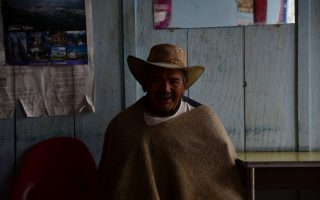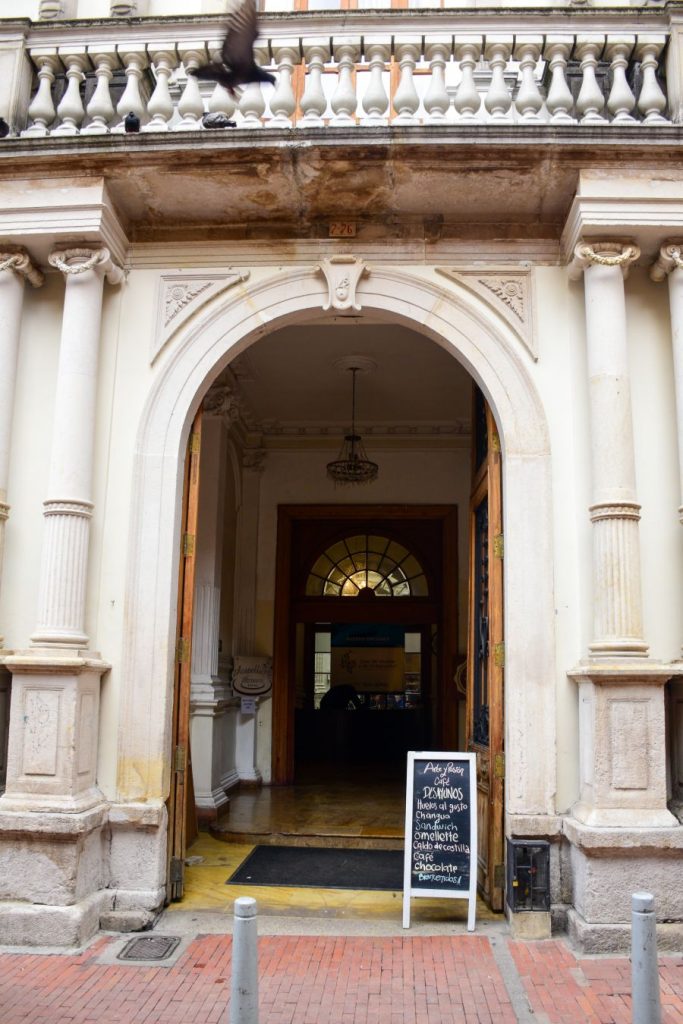
We have half a day of free time in Bogotá, so I accompany Xiomy to the “Arte y Pasion Café: Escuela de baristas“1, which means “Café Art and Passion – Barista School”. It was founded to promote the appreciation of good coffee in Colombia itself. For until today, high-quality coffee is mostly exported, while the less valuable beans are often roasted and consumed locally. Beans that are broken or have different sizes are considered less valuable, because this means that they react differently to roasting and thus also taste differently.
In addition to promoting good coffee, here at “Arte y Pasion”, young people from the less wealthy neighbourhoods of Bogotá and the surrounding countryside have the chance to learn a profession with a future. They can become baristas here, the ones who can create a flower in the perfect foam of your cappuccino. Countless young people have already been trained here on the secret of filtered specialty coffee, the perfectly creamy espresso and a beautifully foamed latte macchiato. The founder alone, Antonio Romero, has already trained more than 3,000 people in Colombia, but also in Venezuela and Perú2.
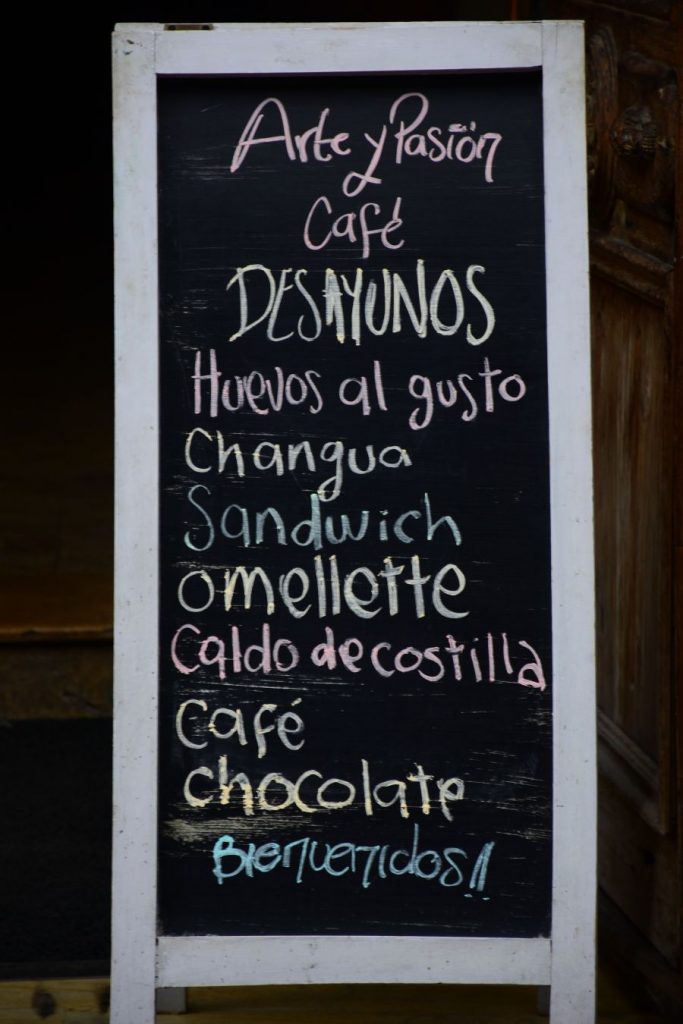
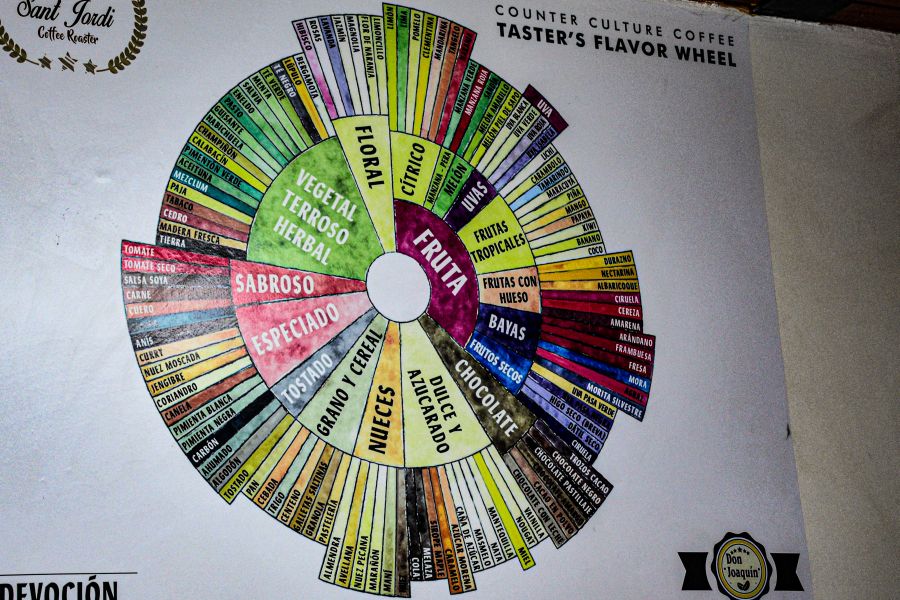
In the training courses, the participants learn not only how to prepare various coffee specialities, but also a lot about the quality of coffee. And they also learn to recognise the different nuances of taste, which are described using a “taste wheel” (similar to the one used to describe wine).
This knowledge about different flavours is important for coffee producers in Colombia as well, because only if they have this knowledge about the quality desired by the customer, can they gear their production to it. With better quality, as we have already seen with Don Omar, a higher price is possible.
Andrés Hernández the son of a coffee producer, whom I was also allowed to interview for this blog, has learned a lot here at “Arte y passion”. Not only about the production of trendy hot drinks, but also about what makes a good coffee bean. He now carries this knowledge back to the place where he grew up.
At the same time, he and his brother have founded a company dedicated to improving the economics of coffee. They are thus looking for ways to improve the quality of production in order to be able to achieve reasonable prices.
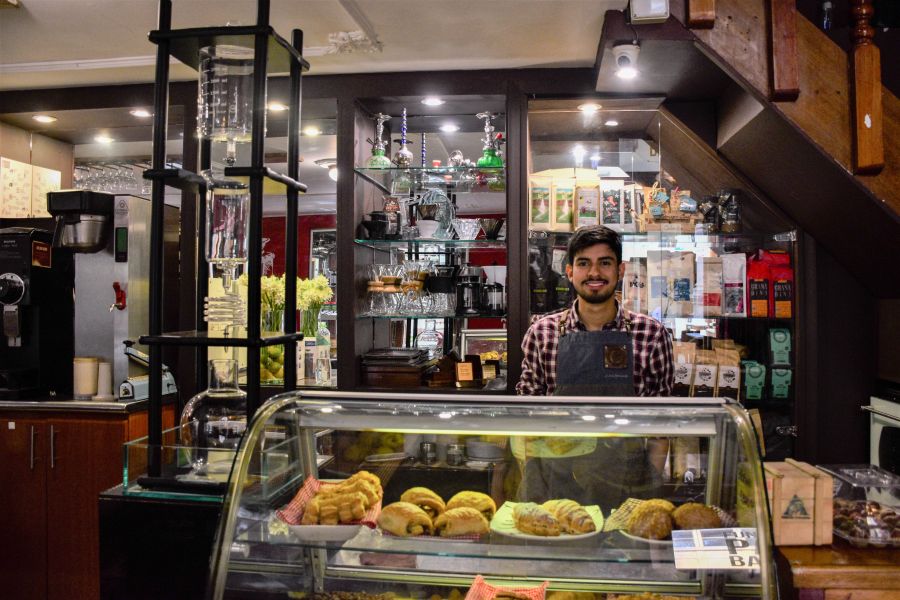
I am impressed by Andrés’ calm yet energetic manner. He radiates the new self-confidence of a generation of Colombians who rightly no longer want to produce cheap coffee for our mindless consumption. So somehow we are both on the same mission.
It’s time so say goodbye. And so Xiomy and I finish our coffees and I buy a few more packets of beans to take home – even though the one from Doña Magdalena (see Day 1) is unfortunately already sold out.
Then it’s off to the airport again to check in for Pitalito. Unfortunately, there is a technical problem so that only a smaller plane can take off instead of the big one. Two of our group checked in earlier and are allowed on – the rest have to wait until the next afternoon. We argue a bit and finally admit defeat. It is a pity, because our visit to the women’s cooperative “Café de mujeres” is cancelled.



